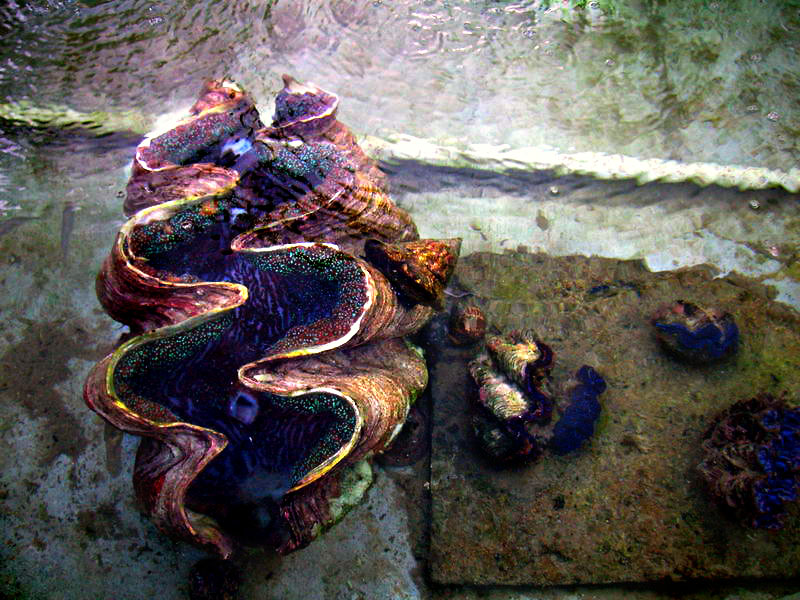Published in the Ocean Watch column, Honolulu Star-Advertiser © Susan Scott
June 02, 2006
Sometimes, I find my most interesting marine animal experiences not in the ocean, but on land. That happened this week during my visit to Aitutaki, a jewel of the Cook Islands.
Yes, last week I successfully got the boat out of Maupilia’s blue lagoon. Or rather, the lagoon got rid of the boat. The outgoing current rushing through that narrow pass spit us out like a pea through a peashooter.
Driving the boat 9.5 mph is more excitement than I like, but mercifully, the whole thing was over in seconds.
Getting into Aitutaki’s little harbor was another story. After a hard, four-day, upwind trip to the Cook Islands, we reached the passage into Aitutaki’s lagoon. The chart said parts of the pass were only 6 feet deep at high tide, and Honu has a 6-foot draft.
Well, high tide it was, and in we went, again against strong current. The depth gauge read 5 feet in the middle of that half-mile-long channel, and at that moment, I felt the keel kiss the sand.
Honu, however, plowed right through that shallow spot, and soon we were anchored in another beautiful tropical lagoon.
I’ve often heard the Cook Islands described as an old Hawaii, and now that I’m here, I see why people compare the island groups. Both have breathtaking scenery and a friendly Polynesian personality. In Aitutaki, however, life is slow, traffic is almost nonexistent and residents seem delighted to share their island with visitors.
One woman, for instance, walked from her house to her front lawn, waving to us lost tourists. “The marae (heiau) is that way,” she called out with a smile, pointing. And later that day, when we arrived at the Aitutaki Marine Research Centre after closing time, the manager, Richard, and his two little girls greeted us warmly.
I barely noticed these nice people at first, since I was rushing from one huge round tank to another, marveling at their inhabitants. One tank held about 10 hand-size honu, hatched on another island and growing up here at this national conservation facility.
In the Cook Island language, green sea turtle is “onu.”
Playing with the little onu was fun, but equally charming were Richard’s clams. The remaining tanks contained several growth stages of giant clams, raised to repopulate Aitutaki’s depleted marine sanctuaries. People take these clams for food.
The larger clams in the tanks, about 3 inches wide, smiled up at us with brilliant blue, green and turquoise lips, the colors coming from algae that live in the clams’ soft tissue. Like corals, the relationship is symbiotic: The algae gain a secure home and carbon dioxide; the clam gets food and oxygen.

As we admired the clams’ remarkable colors, Richard smiled. “I only give my clams the brightest-colored algae.”
Discovering new marine animals is one of the joys of my life, but equally rewarding is learning what caring people in other parts of the world are doing to protect and preserve them.
In Aitutaki, I found it all.